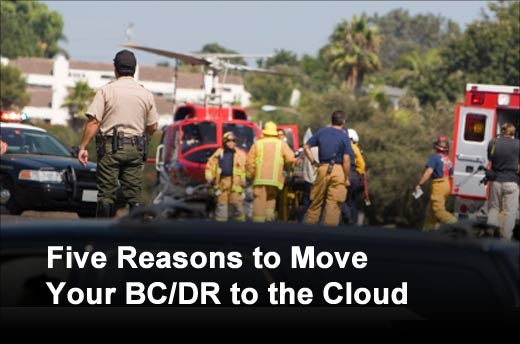If you think business continuity/disaster recovery (BC/DR) planning means there’s no way around adding redundant physical servers to your back room, it may be time to reassess your strategy. The idea that disaster recovery can be sold as a service managed in the cloud is not new, but according to Logicalis, an international provider of integrated information and communications technology (ICT) solutions and services, it’s quickly gaining traction among savvy CIOs and IT managers.
“Disaster recovery in the cloud is not the answer for every business in every situation,” explains Joe Long, director of business continuity and storage solutions for Logicalis. “But today’s cloud offerings can give many customers a value-priced tool with which to meet their recovery point and recovery time objectives.”
So how do you determine if your company’s data is a candidate for a DR-in-the-cloud solution? Long says the key is to have a qualified, independent third-party conduct a business impact assessment to determine if your business’ recovery point objective (RPO) and recovery time objective (RTO) requirements can be supported by DR in the cloud before any decisions are made. If it turns out that your company is a candidate for DR in the cloud, there are several good reasons to move forward with a full-scale evaluation of the advantages.
Click through for five reasons you should consider for moving your BC/DR to the cloud, as identified by Logicalis.
Imagine for a moment that DR in the cloud is similar to the way you work with your residential electric company. You pay a small monthly fee for connecting your home to the utility, and then you pay for actual power usage. If you don’t draw any electricity, the small monthly fee remains; if you turn on your pool pump and your refrigerator and your lights, costs are added incrementally as you use increasingly more power. That’s a vastly different model than the way outsourced DR services have traditionally been handled, where you pay a fee commensurate with the amount of service you might need, in the event of a disaster, whether or not you ever use it. Which sounds more cost effective?
A great analogy here is to compare traditional outsourced DR services to your cell phone provider. To upgrade your cell phone or change your coverage model, you often have to sign up for another two years or more on a new service contract. But expanding your BC/DR service levels through the cloud gives you the freedom to reserve more or less space in a shared “container” system without dramatically impacting cost, without having to renegotiate service level agreements (SLAs), and without adding new multi-year commitments. If you’re doing DR in your own data center, or outsourcing to a third party who has reserved dedicated systems for your use only, the cost can be astronomical by comparison. In the cloud, with a shared container model, you simply reserve the space you need available to you, and make changes as your business needs dictate, usually at a very minimal cost, if any, for those changes.
Today’s servers are designed for multi-tenancy use and can support different customers based on a variety of security settings, including advanced encryption methodologies to ensure the security of data in transit as well as at rest. As a result, data stored in the cloud is widely considered to be equally secure to information stored in a redundant local data center.
If you have your own in-house data center, you can design your BC/DR plan and redesign it to meet changing needs, and you can conduct tests at random. Often, however, with traditional outsourced DR providers, the ability to customize your RPOs, RTOs and to conduct multiple tests throughout the year is sharply curtailed according to the parameters of your SLA. But typical DR-in-the-cloud solutions offer users an unrivaled combination of price-performance and custom design options.
Does your current DR strategy give you a “SWAT team” of IT professionals who can jump into action to kick-start your failover when disaster strikes? This is yet another reason to consider DR in the cloud. Cloud providers are accustomed to running and managing their own systems, and when you are in crisis mode, they are often able to conduct the initial restore on the customer’s behalf, getting you up and running that much faster.








